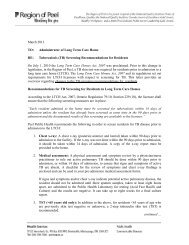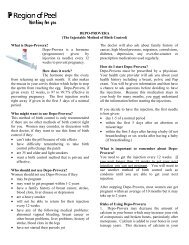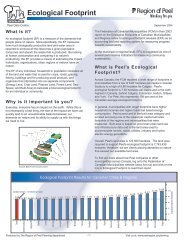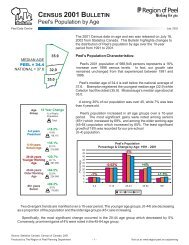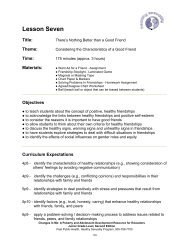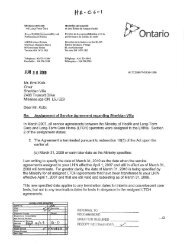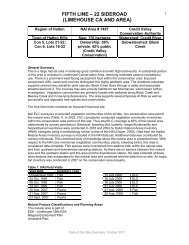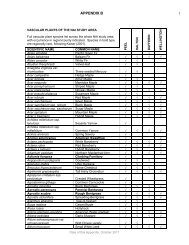Create successful ePaper yourself
Turn your PDF publications into a flip-book with our unique Google optimized e-Paper software.
Anatomy Review<br />
Student Handout<br />
At the bottom <strong>of</strong> the mons pubis, there are two folds <strong>of</strong> skin on either side <strong>of</strong> the opening<br />
<strong>of</strong> the vagina. These are called labia (sometimes called lips). There are actually two<br />
sets <strong>of</strong> folds: the labia majora (or outer lips) and the labia minora (or inner lips). In the<br />
space where the labia minora (inner lips) meet at the bottom <strong>of</strong> the mons pubis, the lips<br />
cover a small sensitive bump called the clitoris. Below the clitoris is the urethral<br />
(pronounced: you-ree-thrul) or urinary opening, which is part <strong>of</strong> the urinary system. This<br />
is where urine leaves the body. Finally, below the urinary opening is the vaginal<br />
opening, the entryway to the vagina.<br />
Cervix<br />
The cervix (pronounced: sur-vix) is the narrow bottom part <strong>of</strong> the uterus that extends<br />
into the vagina. It has strong, thick walls. The opening <strong>of</strong> the cervix, which is very small<br />
- no wider than a straw - provides an entryway to the uterus. This is why a tampon can<br />
never get "lost" inside a girl. During childbirth, the cervix can expand in order to allow a<br />
baby to pass.<br />
Uterus<br />
The uterus (pronounced: you-tuh-rus) has thick muscular walls and looks like an upsidedown<br />
pear. Normally, the size <strong>of</strong> a woman's uterus is about the same as her closed fist.<br />
The walls <strong>of</strong> the uterus touch one another. The uterus contains some <strong>of</strong> the strongest<br />
muscles in a woman's body. These powerful muscles are able to expand and contract<br />
in order to accommodate a growing baby and then to help push the baby out during<br />
labour. The uterus is also where menstruation begins each month - it builds up its inner<br />
lining, known as the endometrium (pronounced: en-doe-mee-tree-um), with extra blood<br />
and tissue, anticipating that an egg might be fertilized by sperm entering the woman's<br />
body. The fertilized egg can then attach to the endometrium and pregnancy occurs. If<br />
an egg is not fertilized, the uterus sheds this extra blood and tissue, which comes<br />
through the cervix and out <strong>of</strong> the vagina as a menstrual period.<br />
Fallopian Tubes<br />
The fallopian (pronounced: fah-loh-pee-un) tubes are attached on one end to either side<br />
<strong>of</strong> the uterus, and they extend out and back from the uterus. Each fallopian tube is<br />
about 4 inches long and is about as wide as a piece <strong>of</strong> spaghetti. Within each tube is a<br />
tiny passageway no wider than a sewing needle. At the other end <strong>of</strong> each fallopian<br />
tube is a fringed area that looks like a funnel. This fringed area wraps around the ovary,<br />
but is not completely attached to the ovary. When an egg leaves from the ovary, it<br />
enters the fallopian tube. Once the egg is in the fallopian tube, tiny hairs in the tube's<br />
lining help push the egg down the narrow passageway toward the uterus.<br />
Helping Teens To Make Healthy Decisions About Sex And Relationships: A Resource For Educators<br />
<strong>Peel</strong> Health Department: Healthy Sexuality Program – Contact Health Line <strong>Peel</strong> @ 905-799-7700<br />
50



